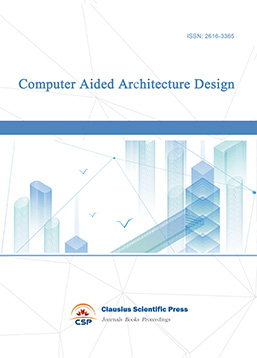Analysis and Sustainable Development of New Campus-Social Sustainability in the Case of Pingyi New High School Campus in China
DOI: 10.23977/jceup.2023.051110 | Downloads: 38 | Views: 1102
Author(s)
Lin Zhou 1
Affiliation(s)
1 China Luncheng Architecture Design (Shanghai) SDN BHD, Shanghai, 200092, China
Corresponding Author
Lin ZhouABSTRACT
The evolution of educational paradigms in China has led to a growing emphasis on the design and functionality of academic institutions, imbuing campuses with exacting standards. This includes orchestration of campus architecture, spatial allocation, and various elements such as spatial choreography and functional stratagem. Architects have deftly harmonized pedagogical values, cultural influences, and future aspirations, exemplified by Shandong's Pingyi high school campus. This discourse highlights the ebullience of design ideas and their realization, with the overall aim of enlightening similar projects. In summary, the orchestration of campus planning involves a fusion of numerous elements, with the design ethos galvanizing the creation of academic spaces aligned with contemporary education and cultural nuances, as seen in Shandong's Pingyi campus.
KEYWORDS
Featured campus; constructive; architectural scheme; plan and designCITE THIS PAPER
Lin Zhou, Analysis and Sustainable Development of New Campus-Social Sustainability in the Case of Pingyi New High School Campus in China. Journal of Civil Engineering and Urban Planning (2023) Vol. 5: 74-81. DOI: http://dx.doi.org/10.23977/jceup.2023.051110.
REFERENCES
[1] Cibulka, J. G. (1994). Policy analysis and the study of the politics of education. Journal of Education Policy, 9(5), 105–125.
[2] Edin, M. (2003). State capacity and local agent control in China: CCP cadre management from a township perspective. The China Quarterly, 173, 35–52.
[3] Ferreira, J. (2009). Unsettling orthodoxies: Education for the environment/for sustainability. Environmental Education Research, 15(5), 607–620.
[4] Lin Zhou.(2023) Sustainable Development and Architectural Design of Featured Campus-in the Case of Wangcheng No. 2 Middle School in Jiangxi[J]. Journal of Civil Engineering and Urban Planning, 5(9), 16-22.
[5] Zu, X-Y. (2006). Using the concept of sustainable development education as guideline to improve the quality of education – the development and practices of school-based curriculum. Sustainable Development Education in China, 25(5), 40–43.
| Downloads: | 11907 |
|---|---|
| Visits: | 412054 |
Sponsors, Associates, and Links
-
Journal of Sustainable Development and Green Buildings

-
Landscape and Urban Horticulture

-
Bridge and Structural Engineering

-
Soil Mechanics and Geotechnical Engineering

-
Journal of Municipal Engineering

-
Heating, Ventilation and Air Conditioning

-
Indoor Air Quality and Climate

-
Computer Aided Architecture Design


 Download as PDF
Download as PDF